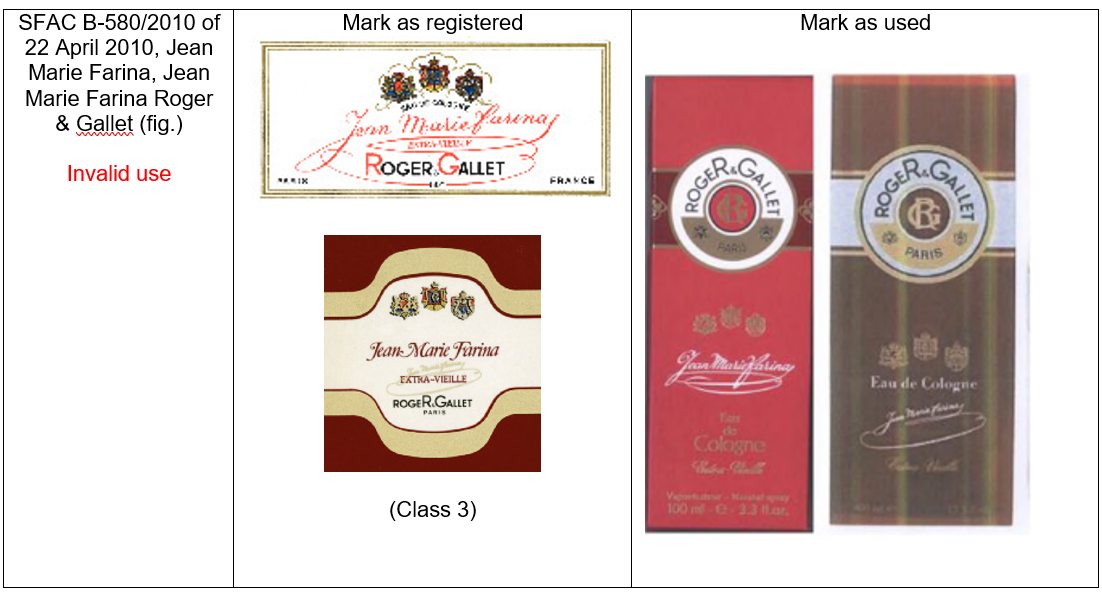How trademark use requirements influence permissible brand evolutions

Incorporating a long-term vision into a filing strategy is crucial. While entrepreneurs may be more concerned with how their brand appears to potential consumers, it is vital that they ensure proper use in order to avoid cancellation actions. Article 11(1) of the Swiss Trademark Act establishes that “as it is registered” use is one of the main criteria of proper use in Switzerland. However, brands are live assets; they need to evolve to current tastes or take technical constraints (eg, labels or the format of advertising materials) into account. For that reason, understanding the extent to which Swiss regulations and practices allow rights owners to modernise their trademarks (without the need to re-file every time the brand evolves) is crucial.
The seemingly regimented ‘as it is registered’ rule is softened by Article 11(2) of the act, which states that “use in a manner not significantly different from the registered trademark […] also constitutes use of the trademark”. According to the Supreme Federal Court, deviation of use is essential if the relevant circle of consumers no longer recognises the same sign because the distinctive characteristics that create its overall impression have lost their identity (see Figure 1). These elements therefore must be included into the mark as used. Any permitted changes refer only to secondary elements of the registered sign. As a result, the more distinctive the registered mark, the more significant the changes that are allowed (see Figure 2).
Figure 1

Figure 2

Black and white versus colour
Generally, use of a black-and-white registered mark in multiple colours is not considered to be an essential change. Case law is also somewhat generous in scenarios where colours differ slightly between the mark as used and as registered. Likewise, use of coloured letters in a registered word mark is also admissible, as is writing white letters on a black background (see Figures 3 and 2).
Figure 3

However, if a mark is registered with a colour claim and this claim specifically enabled the mark’s registration, it can be used only in that colour (see Figure 4). Similarly, if a particular colour is expressly excluded at the time of registration, use of the mark in this colour would be invalid (see Figure 5).
Figure 4

Figure 5

Slight amendments
Slight amendments can be considered admissible, such as the use of a graphic in marginally different proportions and angles (see Figure 6). Valid use should be confirmed when a decorative element is placed either above or to the right of the verbal element, or even presented in a slightly smaller way than in the registered mark (see Figure 2). A change in writing does not result in an alteration, unless the way in which the word is written is what gives the mark its distinctive character. The same rule applies for replacing uppercase letters with lowercase letters, and vice versa.
Figure 6

Slight modernisation of the graphic and font is admissible – even if words have been registered in a crisscross sequence and are used in line – as long as the general impression remains the same (see Figure 2).
On the other hand, the graphic impression changes when several parts of the logo or different figurative or semi-figurative elements are slightly altered simultaneously in a way that changes the general impression (see Figure 4 and Figure 7).
Figure 7

Likewise, use in another language generally constitutes an alteration, except if the visual and phonetic global impression remain the same.
Additions
Swiss law is less strict with regard to the addition of new elements than it is with regard to deletions.
Adding elements is typically tolerated when the additional element is descriptive or weakly distinctive. This is often the case for baselines or light figurative elements (see Figure 8).
Figure 8

However, additions are not accepted if the trademark is deemed to be weakly distinctive, the added element confers a different meaning to the sign or the added element causes the mark to be perceived as a company name (SFAC B-3686/2010 Heidiland/Heidi Best of Switzerland). The use of an additional element is also denied when an important graphic element is added (see Figure 9).
Figure 9

Whether the additional element has been the subject of a distinct trademark registration has no impact. Further, one use can have the effect of maintaining rights for two trademark registrations at the same time.
Deletions
Deletions are generally detrimental in Switzerland. Any omission of a distinctive element leads, in principle, to an altered overall impression. In several decisions, Swiss courts have denied the use of combined trademarks where only the word element was used – either because the word element was found descriptive or weakly distinctive (see Figure 10) or because one of the two distinctive elements is deleted in a way that significantly changes the overall impression (see Figure 1).
Figure 10

The distinctiveness of a semi-figurative sign is deemed to be altered when its word(s) and logo are used separately (eg, in advertising) but arranged in a way that no longer makes them appear as a singular sign (see Figure 1). This is likely to occur when the distinctive character of a sign lies in its combination of weakly distinctive elements or when its word(s) and logo are both distinctive, causing their joint use to make a specific, altered impression.
Conversely, it is admissible in Switzerland to use a trademark without its descriptive elements (see Figure 11).
Figure 11

Consequently, it is crucial to maintain a mark’s essence – namely, its distinctive element(s). It is generally preferable to file a distinctive word mark, or a version with a light design and no colour claims to allow for further adaption of the sign – through the addition of descriptive or decorative elements – in response to market evolution and changing consumer tastes.
However, each case is unique and should be carefully considered during registration and each time its use is modified.
This is an Insight article, written by a selected partner as part of WTR's co-published content. Read more on Insight
Copyright © Law Business ResearchCompany Number: 03281866 VAT: GB 160 7529 10